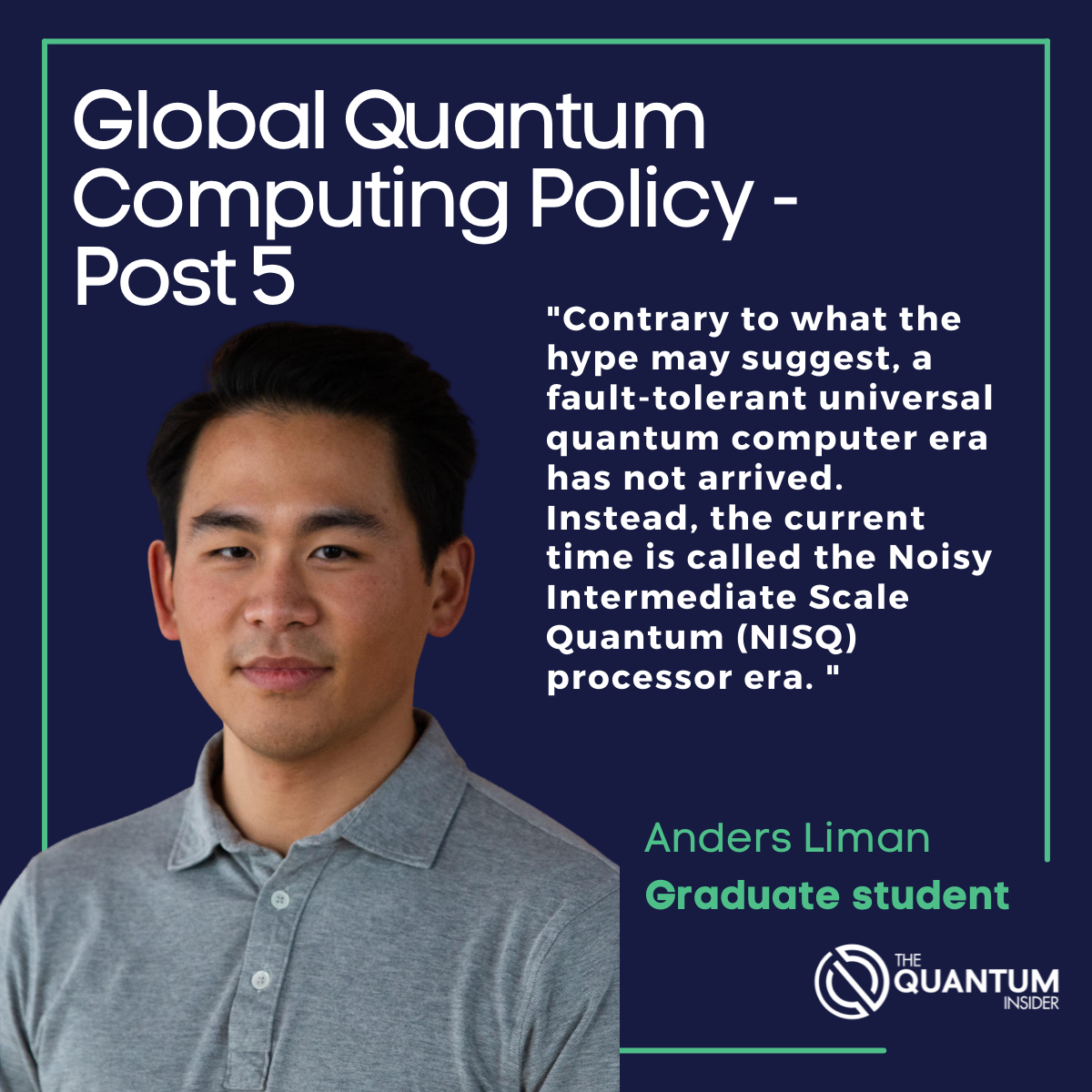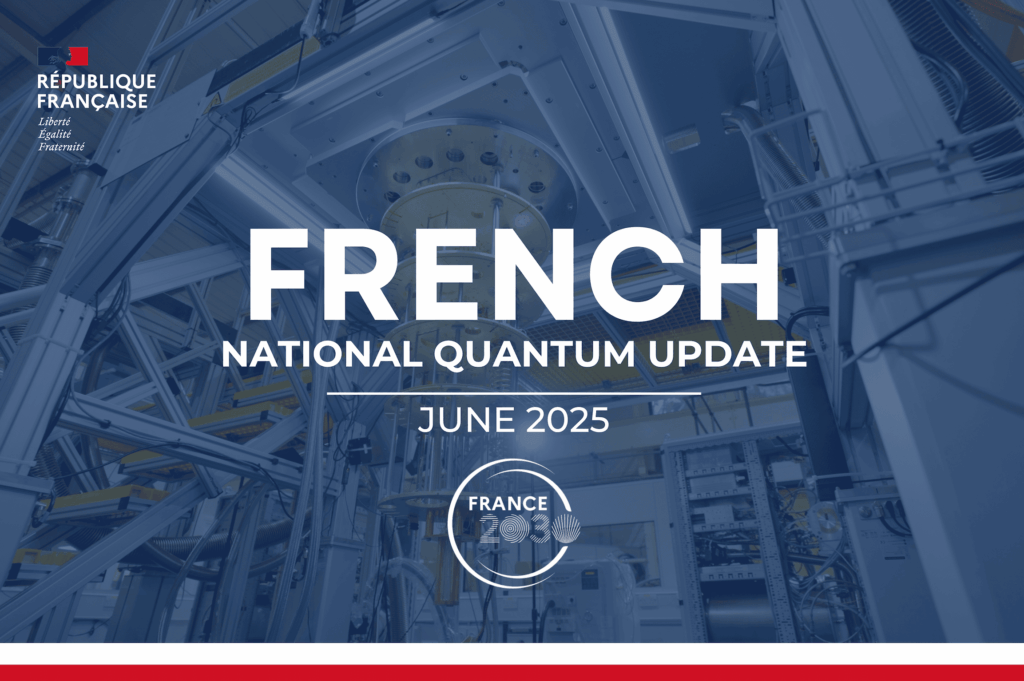My name is Anders Liman. I’m a graduate student studying Tech Ethics and Science Policy at Duke University. I also hold a master’s in Computer Science from North Carolina State University. This summer, as part of a collaboration between Duke and Google, I researched the global quantum computing landscape in an effort to identify engagement challenges and opportunities in the field. This blog series is the fruit of this labor. You can find all the posts in the series written here:
Post 1 – Researching the global quantum computing landscape in an effort to identify engagement challenges and opportunities in the field
Post 2 – How scientific innovation and economic potential drive academic and industry efforts in quantum computing
Post 3 – How national security and digital sovereignty motivate governmental efforts in quantum computing
Post 4 – Competing interests, competing ideals, and unwanted hype in quantum computing, and ways to address them
Post 5 – Identifying NISQ applications, addressing workforce gaps, and developing future workforce in quantum computing
Post 6 – Properly framing quantum computing and setting appropriate expectations
Challenge 3. Identifying valuable NISQ applications
Contrary to what the hype may suggest, a fault-tolerant universal quantum computer era has not arrived. Instead, the current time is called the Noisy Intermediate Scale Quantum (NISQ) processor era. In this era, qubit counts are low, qubits are noisy, decoherence time is short. And, for now, nobody knows of a valuable QC application for the foreseeable future (yet). In other words, the current era sounds much less exciting than the picture painted by the hype. Finding commercially relevant NISQ applications has proven to be a difficult task. However, in order to justify continued private sector investments, these applications will need to be discovered. Researchers must work through the noise to identify useful applications in the current NISQ era instead of solely focusing on the big and bright promises in the not-so-near future.

Opportunity 3. Interdisciplinary collaboration
Many QC industry alliances and consortiums have been established for, among other purposes, identifying and developing commercially relevant NISQ applications. However, most of these alliances and consortiums are limited to QC (or other QIS) companies. Recently, some companies have initiated interdisciplinary collaborative efforts with other industries. For example, IonQ and Hyundai partnered to use quantum algorithms for battery development; IBM and Cleveland Clinic partnered to use QC and other technologies to address challenges in healthcare and life sciences; Google and Boehringer Ingelheim partnered to apply QC in biopharmaceutical R&D; Zapata and Andretti partnered to apply QC in race car analytics. Considering finding valuable applications is one of the most urgent needs in the NISQ era, QC companies should look to expand collaborative efforts with other industries, in addition to working closely with other QC (and QIS) companies.
Challenge 4. Workforce gaps
It is evident that effective QC R&D will involve extensive collaboration among different sectors and various disciplines. That said, it is uncommon that a country has a strong presence of all these components. Australia, for example, has a strong academic presence, especially in silicon-based nuclear spins. However, many Australian scientists have departed for the private sector overseas. While Japan has multiple large corporations supporting QIS development, there seems to be a lack of QC focus in the private sector. Leadership in one area does not necessarily translate to success in another. Furthermore, many countries may excel in a few areas, but few have the infrastructure to support a complete QC R&D ecosystem.
Opportunity 4. Play to one’s strength and workforce development
Countries should play to their strengths in QC. For example, country A with academic strengths can leverage its academic leadership and collaborate with neighboring countries with strong industry support. Doing so not only maintains and strengthens country A’s academic leadership, but also incentivizes companies (of country A and its neighboring countries) to directly invest in and support country A’s academic research. Likewise, countries with large non-QC corporations can leverage their private sector strengths to partner with countries with QC-focused startups.
In playing to one’s strength, a country can also recognize areas that may need targeted cultivation and support. Continuing the previous example, country A can collaborate with neighboring countries to stimulate its QC workforce development by upskilling existing workforce in adjacent fields and nurturing future QC workforce to complement its academic strengths. As such, country A is able to develop a more holistic QC R&D ecosystem.
Next Up
Post 6 – Properly framing quantum computing and setting appropriate expectations
Previously
Post 1 – Researching the global quantum computing landscape in an effort to identify engagement challenges and opportunities in the field
Post 2 – How scientific innovation and economic potential drive academic and industry efforts in quantum computing
Post 3 – How national security and digital sovereignty motivate governmental efforts in quantum computing
Post 4 – Competing interests, competing ideals, and unwanted hype in quantum computing, and ways to address them
Acknowledgements
The author would like to express sincere gratitude to the following organizations and individuals for their valuable insights which prove integral to the creation of this blog series: Google Quantum AI team, Google Government Affairs and Public Policy team, Thomas Monz (AQT), Christina C. C. Willis (ColdQuanta), Lamont Silves (IonQ), Ken Brown (Duke University), Jonathan Felbinger (QED-C / SRI International), Carl Williams (CJW Quantum Consulting), Matt Trevithick (DCVC), and David Moehring (Cambium Capital).
The author would also like to express sincere gratitude to the following individuals for their support and counsel throughout the research: Kate Weber (Google), Ashley Zlatinov (Google), Charina Chou (Google), Lee Tiedrich (Duke University), and Buz Waitzkin (Duke University).
For more market insights, check out our latest quantum computing news here.















